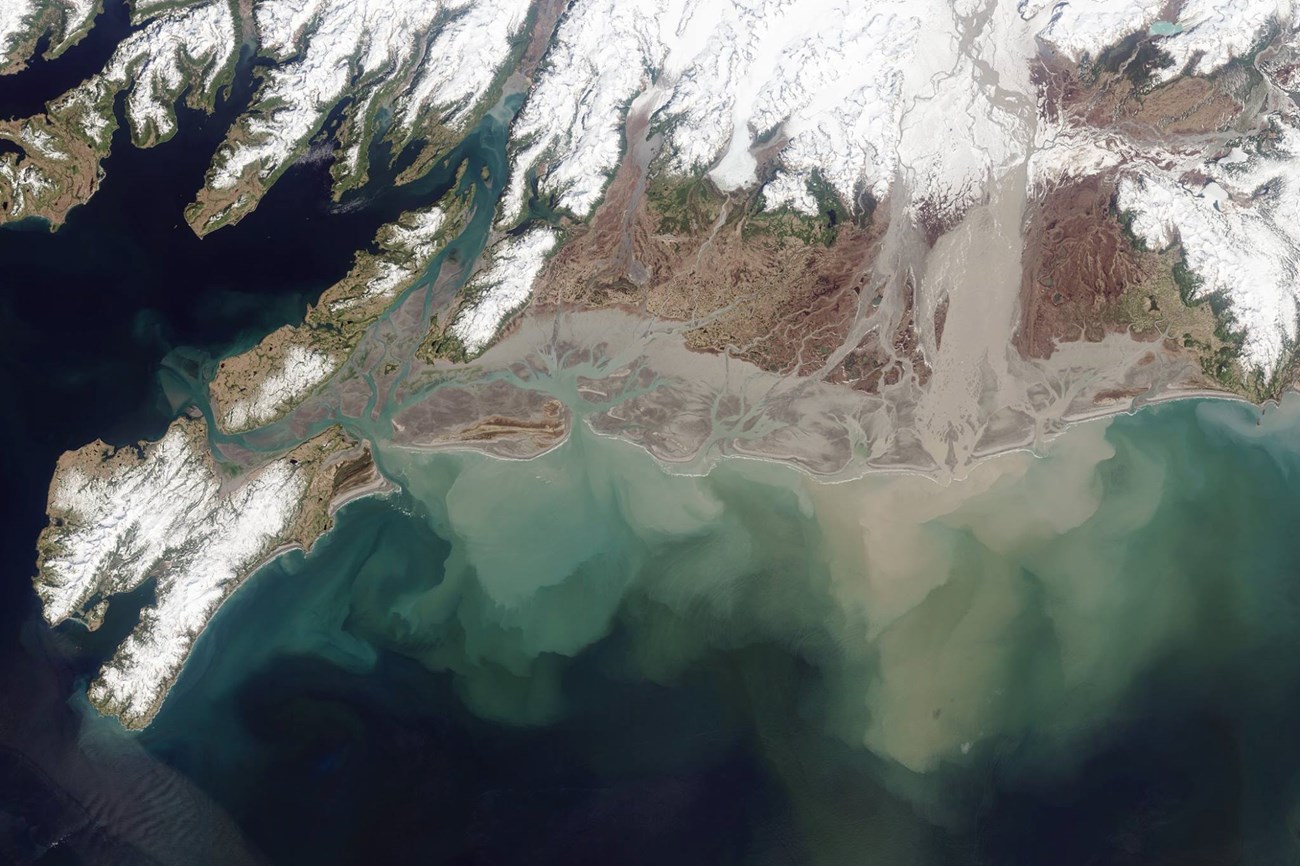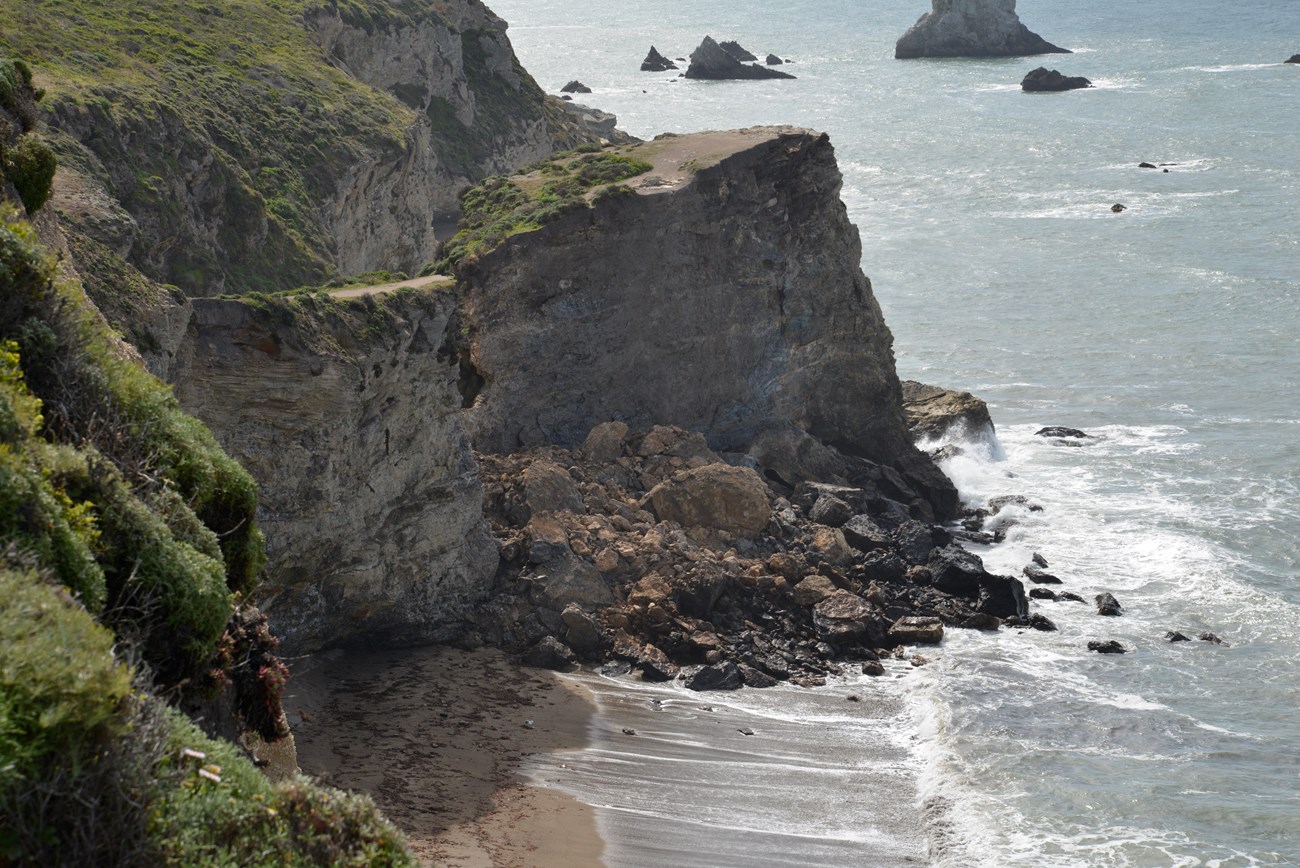Part of a series of articles titled Coastal Processes.
Previous: Coastal Processes—Erosion
Article

NASA Satellite Image.
The main sources of sediment along coasts are: (1) the coastal landforms themselves, including cliffs and beaches; (2) the nearshore zone; and (3) the offshore zone and beyond. The erosion of coastal landforms, especially cliffs, can locally provide abundant sediment in environments with high wave energies (especially where unconsolidated sediments are being eroded).
Land-derived sediment can be provided by mass movement (e.g., rockfalls, landslides, and debris flows), especially where cliffs composed of material susceptible to such processes are being actively undercut. In periglacial environments, such as the Arctic coast, gelifluction (the downslope movement of topsoil via seasonal freeze-thaw cycles) is a particularly important means of transporting sediment into the nearshore zone, while in other high-latitude environments material can be supplied by glaciers. Nevertheless, by far the most significant source of land derived sediment is from rivers. This varies latitudinally, with fluvial sources being of even greater relative importance throughout most of the tropics where low wave energies make marine and coastal erosion less effective. The location and geology of a coastline greatly determines what beach materials are present.

NPS photo.
Cross-shore currents may return previously eroded beach material or fluvial sediments that were initially deposited offshore to the nearshore zone. Particularly severe storm waves, storm surges, and tsunami may occasionally bring sediment to the shore from beyond the offshore zone.
While sediment is constantly being moved more or less perpendicular to or from shorelines by tidal and wave action, the predominant net movement of sediment along most coasts is parallel with the shore through the effects of longshore currents. The movement is called longshore sediment transport and its rate is dependent on wave energy and the angle at which waves strike the coast (an angle around 30° being the most effective).
The overall significance of sediment transport depends on whether it occurs along coasts of free or impeded transport. Impeded transport is characteristic of coasts with irregular configurations like those found in Redwood National and State Parks, California. The amount of sediment transport is limited by the trapping of sediment against headlands or coastal engineering structures. This contrasts with unimpeded sediment transport along straight coasts as found in Cumberland Island National Seashore, Georgia. Determined by the particular coastal configuration, the rate of longshore transport will be related to the predominant angle of the wave approach and the constancy and velocity of longshore currents. When these factors are high, an increase in sediment mobilization and transport will exist. When the velocity of flow is low, sediment settles and builds up. The movement of sediment in dynamic barrier island systems, such as in Gulf Islands National Seashore, Florida and Mississippi, is described by a sediment budget. Sediment is moved between islands via currents. Material taken from one location is deposited elsewhere in an ever shifting system of sandy coastal landforms.

NPS Photo.
Part of a series of articles titled Coastal Processes.
Previous: Coastal Processes—Erosion
Last updated: March 8, 2019